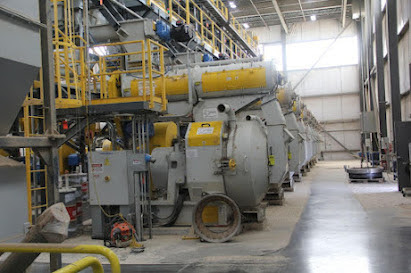Availability of raw materials and market control are the two absolute main things that must be fulfilled so that the wood pellet production business can be sustainable. Investing in expensive equipment will be useless if the two things mentioned above are not met. In large capacity wood pellet production, the quality of the production equipment used is very important. The production goal of achieving large capacity will be achieved if it is carried out with an efficient and safe production process so that production costs are low. Production equipment that is capable of working non-stop 24 hours, easy operation and maintenance with good performance is vital. Regarding raw materials, apart from continuous availability, there are 2 important things that need to be considered, namely the consistency of raw materials and cheap logistics to the location of the wood pellet factory.
Mapping the potential of raw materials needs to be done well, as well as the wood pellet market. Wood pellet raw materials from one type of wood (single material) are certainly easier than mixed raw materials from several types of wood. This is related to the composition of the mixture, which of course is not a problem if the raw material is from one type of wood (single material) which is homogeneous. To strive for homogeneous raw materials, this can be done by creating energy plantations, while mixed raw materials can be taken from several wood processing sources such as sawmills and so on. Energy plantations that can be multifunctional so that they provide many benefits. This can be done by maintaining a balance between wood productivity for wood pellet production, environmental functions in the form of maintaining erosion and groundwater, and the volume of wood harvested must not exceed the growth rate or be at least the same (carbon balance) and the use of by-products for additional revenue such as utilization leaves for animal feed and honey from beekeeping.
Meanwhile, from a market aspect, a number of requirements also need to be met so that sustainable transactions occur. Apart from technical factors in the form of wood pellet specifications and production volume, non-technical factors such as sources of raw materials related to environmental sustainability are also often required nowadays. Users of wood pellets abroad, especially power plants, are in decarbonization efforts through cofiring programs with coal. Sustainable decarbonization efforts usually require environmental certificates such as FSC regarding the source of the raw materials used. This is to prove that the renewable fuel chain, especially wood pellets, indeed complies with mutually acceptable environmental sustainability standards. There are certain countries that impose long contracts for the purchase or procurement of their wood pellets, but there are also those that choose short-term contracts. The typical buyer or market for wood pellets also needs to be given special attention.








Biomass wood pellets are not only a sustainable and renewable energy source, but also make for a cozy and efficient heating option during the chilly winter months!
ReplyDelete